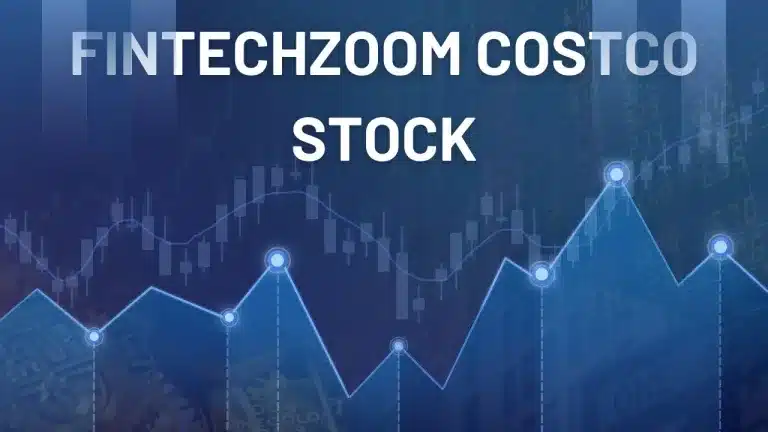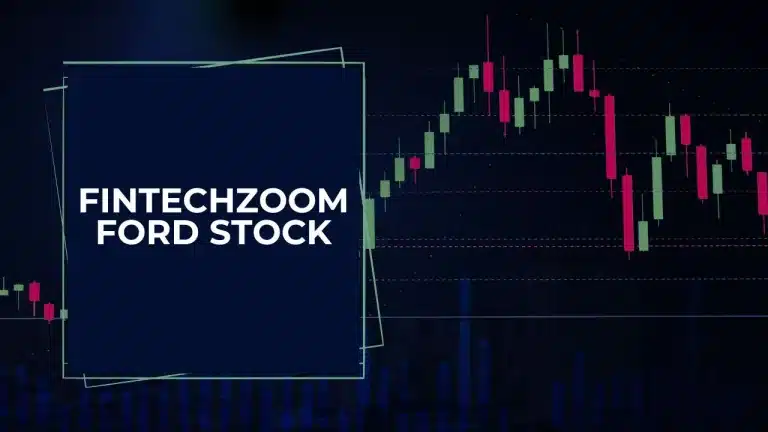Fintechzoom Uber Stock: Analysis and Predictions
Uber Technologies Inc., a leader in the global ride-sharing industry, has become a focal point for investors looking to understand the complexities of tech-driven transportation markets. The company, listed on the New York Stock Exchange under the ticker UBER, serves as a barometer for both the tech and transportation sectors. In this analysis on Fintechzoom, we’ll provide a detailed snapshot of Uber’s current market position, Uber stock performance, and future outlook, aiming to equip investors with the necessary insights to assess its viability in their portfolios.
The significance of analyzing Uber lies not just in its role as a market leader but also in its potential to reflect broader economic indicators and consumer trends. As we proceed, this article will break down Uber’s recent stock performance, dissect its financial health, and interpret analyst ratings and price targets, culminating in a detailed forecast of its investment potential.
Fintechzoom Uber Stock Performance Overview
Uber’s stock performance in recent times has illustrated a dynamic yet challenging landscape. As of April 2024, Uber’s shares have shown resilience with a price uptick of 12.4% from the start of the year, trading around $69.20. This increase reflects a recovering confidence among investors, possibly tied to strategic business adjustments and recovery in the post-pandemic market environment.
However, the stock has not been without its fluctuations. Throughout the past year, Uber has navigated through varying degrees of volatility, attributed mainly to fluctuating market sentiments and external economic pressures such as interest rate changes and geopolitical tensions. For instance, a significant drop was observed on April 4, 2024, when the stock declined by 2.67% in a single trading day, influenced by broader market downturns and rate cut uncertainties. This kind of volatility underscores the need for investors to maintain a vigilant eye on market conditions that directly impact tech and gig economy stocks like Uber.
Fintechzoom Uber Financial Analysis
Uber Technologies Inc. has demonstrated a complex financial landscape, reflective of its expansive operational scale and aggressive growth strategies. In the most recent quarterly report, Uber reported a notable revenue increase, indicating robust recovery and adaptation strategies for post-economic downturns. Uber reported its revenue for the quarter ending in March 2024 at $8.1 billion, which represents a 16% increase from the previous year. The company attributes this growth largely to increased demand in both the ride-sharing and delivery segments, boosted by the stabilization of global economies and the return of urban mobility to pre-pandemic levels.
Despite these gains, Uber’s profitability remains under scrutiny. The company reported a net income of $195 million for the same quarter, which, while a significant improvement from previous losses, still points to challenges in cost management and operational efficiency. The primary financial strain comes from investments in new technology and market expansions, which, while essential for long-term growth, have short-term impacts on net profitability.
Investor sentiments around Uber’s financial health are cautiously optimistic. Analysts appreciate the company’s aggressive pursuit of growth and market expansion but remain concerned about its ability to manage expenses and achieve sustained profitability. The financial outlook suggests that while Uber is moving towards a more financially stable position, the path is peppered with potential setbacks from regulatory challenges and competitive pressures.
Fintechzoom Uber Stock Ratings and Price Targets
Uber Technologies Inc. garners substantial attention from Fintechzoom analysts, with a consensus leaning towards a ‘Moderate Buy’ rating. This consensus is derived from a broad spectrum of Fintechzoom 31 analysts, providing a comprehensive perspective on the stock’s future. The average price target set by Fintechzoom for Uber stock stands at $78.94, indicating a potential upside of approximately 14.1% from its current trading price of $69.20.
The range of Fintechzoom price targets for Uber stock is notably wide, stretching from a low of $43.00 to a high of $100.00. This variance underscores differing views on Uber’s future performance, linked to factors like market expansion, regulatory environment changes, and technological advancements. In April 2024, a more optimistic view was presented by Fintechzoom analysts who set the high forecast at $100.00, considering Uber’s aggressive market penetration strategies and mobility technology innovation.
Furthermore, recent upgrades and downgrades also play a crucial role in shaping investor expectations. For instance, analysts from major financial institutions like JMP Securities and Piper Sandler have recently reiterated their high price targets, suggesting a strong buy outlook based on Uber’s strategic initiatives like partnerships in delivery services and expansion in international markets. These endorsements reflect a broader confidence in Uber’s ability to navigate current market challenges and capitalize on long-term growth opportunities.
Which Factors Influence Uber Stock Price?
The valuation of Uber Technologies Inc.’s stock is influenced by a variety of internal and external factors that contribute to its dynamic market perception.
Externally, the regulatory landscape plays a critical role. Uber operates in multiple global markets, each with its own regulatory framework affecting operations. Changes in labor laws, for instance, particularly regarding gig worker classification, pose financial and operational risks that could impact profitability. Furthermore, competition in the ride-sharing and delivery sectors is fierce, with rivals like Lyft and international entities continuously innovating and capturing market share, which can pressure Uber’s growth and pricing strategies.
Internally, Uber’s ability to innovate and penetrate new markets is a significant driver of its stock value. The company’s investments in autonomous driving technology and expansions into new verticals like freight and food delivery are seen as long-term growth opportunities. However, these require substantial capital outlay and time to yield returns, affecting short-term financial performance and investor sentiment.
Another critical internal factor is Uber’s financial performance, particularly its path to profitability. While recent quarters have shown improved revenue streams and cost management, the ongoing challenge of turning a consistent profit remains a focal point for investors. The balance between growth spending and profitability is a delicate one that Uber continues to navigate.
Finally, macroeconomic factors such as economic downturns, fuel prices, and changes in consumer behavior also play a role. For example, the global shift towards remote work has altered commuting patterns, which impacts demand for ride-sharing services. Similarly, economic recessions can reduce discretionary spending, affecting Uber’s core business segments.
Understanding these factors provides a clearer picture of the potential risks and opportunities that lie ahead for Uber, aiding investors in making informed decisions about the stock.
Fintechzoom Future Outlook and Investment Potential on Uber Stock
Uber Technologies Inc. stands at a crossroads of opportunity and challenge as it moves forward into the coming years. The company’s future outlook is promising given its strategic initiatives and continuous investment in growth areas like autonomous vehicles, expansion into new geographic markets, and enhancing its delivery services. These endeavors are expected to drive long-term growth and help Uber diversify its revenue streams beyond its core ride-sharing business.
Investment in technology, particularly in areas such as artificial intelligence and machine learning for route and delivery optimization, positions Uber well ahead of many competitors in operational efficiency. This technological edge is vital for maintaining its market leadership and improving profit margins over time.
However, potential investors should also consider the risks associated with Uber. The company’s profitability is still not consistent, and it operates in a highly competitive and regulatory-intense environment. These factors could lead to significant volatility in stock performance. Furthermore, the global economic climate, including inflation rates and discretionary consumer spending, could impact Uber’s recovery and growth.
Considering these elements, the investment potential in Uber requires a balanced view of its aggressive growth strategy against the backdrop of operational and market challenges. For those with a tolerance for risk and a focus on long-term horizons, Uber presents a unique blend of opportunities driven by innovation and market expansion. However, for conservative investors, the current unpredictability surrounding profitability and regulatory issues might pose too great a risk.
Frequently Asked Questions (F.A.Q)
What is the current Fintechzoom consensus on Uber stock?
The current consensus of Fintechzoom on Uber stock is a “Moderate Buy”. This rating is based on a composite of various Fintechzoom analysts’ opinions, reflecting general optimism about Uber’s strategic direction and market initiatives, despite some ongoing challenges. The average price target among analysts is $78.94, suggesting a potential upside from the current trading levels.
How has Uber’s stock price fluctuated in the past year?
Over the past year, Uber’s stock price has experienced significant volatility. Starting the year at approximately $61.57, the stock has navigated through various market conditions, reflecting both operational successes and macroeconomic challenges. The price has peaked at various points, influenced by positive earnings reports and strategic moves, but also dipped in response to broader market downturns and regulatory news.
What are the highest and lowest price targets set by Fintechzoom for Uber stock?
Fintechzoom has set a wide range of price targets for Uber stock, with the lowest being around $43.00 and the highest reaching up to $100.00. This wide range reflects differing views on the company’s future performance, arising from various assessments of Uber’s market expansion, technological advancements, and its ability to overcome regulatory hurdles.
Wrapping Up
Uber Technologies Inc. continues to be a significant player in the tech and transportation sectors, offering both challenges and opportunities for investors. With its expansive operations and innovative approaches to mobility, delivery, and freight services, Uber is strategically positioned to capitalize on market trends and consumer behaviors. However, the investment landscape for Uber remains complex, influenced by regulatory dynamics, competition, and economic factors.







